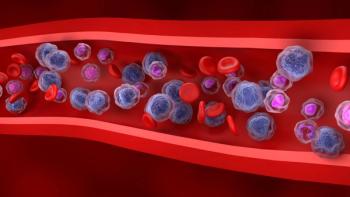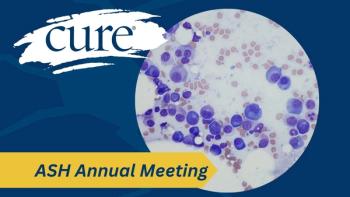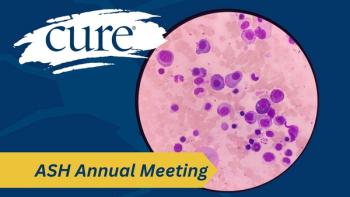
Carfilzomib for Multiple Myeloma and Donna’s Second Relapse
Cristina Gasparetto, MD, discusses Donna’s relationship with the drug carfilzomib for multiple myeloma therapy, as well as her second relapse.
Episodes in this series

Cristina Gasparetto, MD: Did you also have a problem with insurance coverage, cost issues, access during that time?
Donna Kidder: My only issue, because I did switch; at that time I still had Blue Cross Blue Shield, and everything was covered fairly well, I just had high premiums. But when I got on Medicare, my issue was paying for the pills, because even at 5%, the pills are expensive. But I’m in a position where basically I’d retired, so I could take all of my Social Security benefits and small IBM retirement to pay for my bills, and that’s what I do.
Cristina Gasparetto, MD: It’s not fair, I have to say, and we’ll talk about insurance coverage, there are some large copays sometimes. But pharmaceutical companies have done a great job providing support for some patients. I have patients who have a large copays, and sometimes they seek help from the pharmaceutical companies to provide grants, some support in specific situations, so they reduce your copay. It’s very important to have a relationship with our financial people and social workers, so we can navigate the system and see how much we can support you during this period. When you were receiving the carfilzomib and pomalidomide, did you have a lot of side effects? Were you doing OK?
Donna Kidder: Since I don’t recall the side effects, I don’t think they were major. I had the normal roller coaster that I had with chemotherapy and steroids.
Cristina Gasparetto, MD: Going up and down.
Donna Kidder: Yes, where I’m wired, and then I crash, and then I have a few normal days, and then I start over. But I’m used to it.
Cristina Gasparetto, MD: It’s hard to say but it’s the reality that you kind of got used to some of these drugs. Fortunately, some of these combination are very effective. Like yours, of course, brought you back to a very good, deep response, but you have to endure some of the side effects. With all combinations, we’ll see the blood counts, the platelets sometimes dropping, some anemia. Then things will settle down. Then we see the risk of infections going up. That’s the reason during the COVID-19 pandemic that we were very cautious about which combination to choose, because we were trying to not only control the myeloma but also minimize the potential side effects and COVID-19 infections. As you know, with the pandemic it became a terrible time for all of us.
Carfilzomib is a very good drug, is a proteasome inhibitor, very well tolerated. When we started to use it many years ago, there was a concern that some patients could have cardiac issues. But if you see the numbers, the cardiac events from when we started to now, we learned about how to use carfilzomib. It’s actually a very small percentage of patients who will develop some cardiac issues, but they are reversible, they come back to normal. But we monitor for that, we monitor blood counts, for cardiac issues, some potential increase of infection, and then some GI, gastrointestinal, issues. We need to be aggressive with supportive care, but overall it’s relatively well tolerated, like you mentioned. The steroids maybe are the worst of the combination of the drugs because they give you mood swings, agitation, anxiety, and so we do a good job of tapering down the steroids.
But I think the most important thing for us is to determine a goal for the second line. And again, we want to push the therapy as long as we can because every time we change a line of treatment, you are with a new combination that might or might not work, and your myeloma is a little more aggressive. Also you have a different type of toxicity, so we have to go through it again. I’m glad that after the first few doses your body adjusted and it became kind of routine. It was destroying your routine a little because you had to go out for the infusion, but again, you were able to maintain a remission for a couple of years. At that point, when you were off therapy, I imagine your quality of life was back to normal, right?
Donna Kidder: Oh, very much so. Yes.
Cristina Gasparetto, MD: Then what happened? It came back again.
Donna Kidder: Yes.
Cristina Gasparetto, MD: That’s the problem with myeloma, right?
Donna Kidder: Yes.
Cristina Gasparetto, MD: That unfortunately is very typical. It’s not just you, Donna. That’s the reason when you explain the diagnosis of myeloma to a patient it’s very difficult, because we know that eventually it’ll come back, and it will come back again. We do have a lot of options, so the key is to choose the best option at the right time. We talk about early relapse versus more aggressive relapse, and what type of combination. We do have a lot of approved drugs in combination. Did it come back in the same way, protein level going up?
Donna Kidder: Yes.
Cristina Gasparetto, MD: Your disease relapsed. The reason that protein level is the most common way for myeloma to come back is because now we are monitoring you, from the moment you have the diagnosis, we keep following you. So we detect progression very early. We don’t wait for your symptoms to arrive.
Donna Kidder: Exactly.
This transcript has been edited for clarity.





